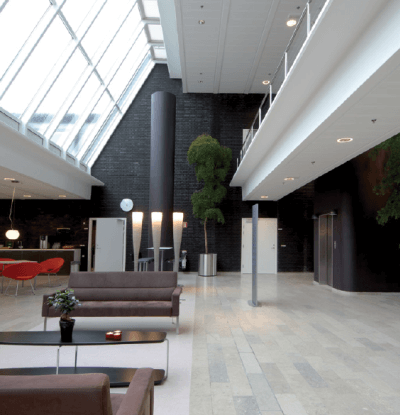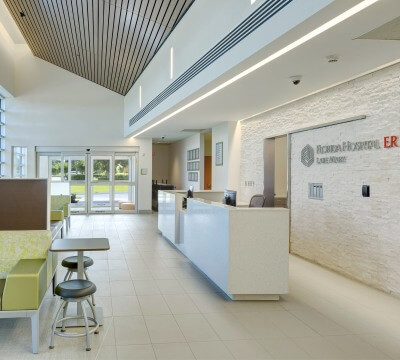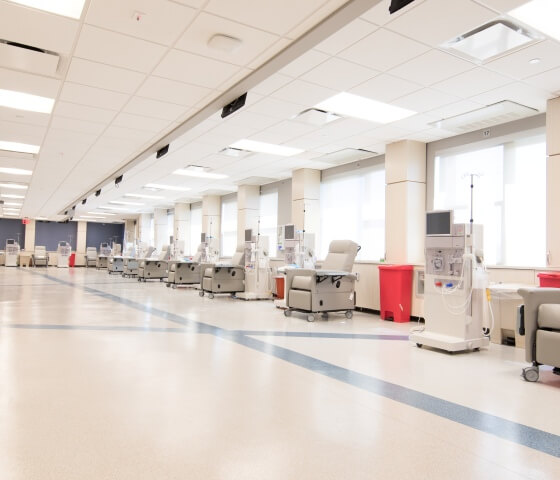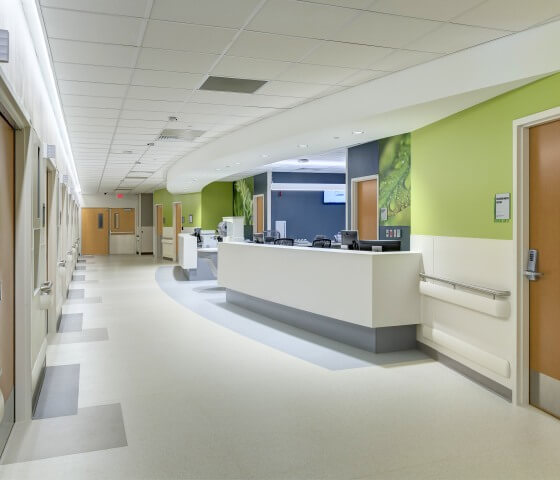Hospitals
Hospitals are unique and complex acoustic environments filled with numerous noise sources, limited by strict hygienic requirements, and populated with critically sensitive occupants. Healthy acoustic conditions are paramount to the missions of hospitals: patients need to sleep and heal without environmental stressors; staff, patients, and family need to communicate accurately but privately; staff need to be able to localize alarms and calls for help. Noise in hospitals has been shown to increase patient risk for cardiovascular response, pain, intensive care delirium, fragmented sleep, and reduced recuperation. Results show that effective hospital soundscapes require a complex choreography of architectural layout, acoustic design, medical equipment and alarms, and administrative processes that is only beginning to be fully understood.
The challenge for researchers and engineers evaluating healthcare noise challenges is effectively defining “quiet” for patients, which is in the realm of psycho-acoustics, the perception of sound. Some researchers have approached this problem by evaluating the types of sounds that awaken patients, which is believed to be the most common reason patients state the area around their room was not quiet. This interdisciplinary group of doctors and engineers performed a sleep study with recorded audio examples at controlled sound levels to measure the sleep arousal thresholds for 14 different sound sources, and found that phones, alarms, and staff conversations were highly alerting. Designing to control or reduce noise from phones and alarms is a condition of the devices and their use, but reducing noise from staff conversations is a complex condition of building acoustics and staff behavior. Another multidisciplinary research team, the Healthcare Acoustics Research Team (HART),





